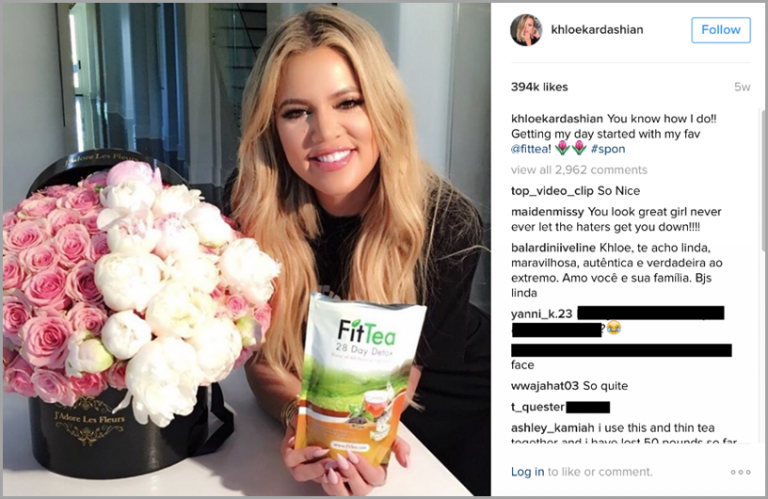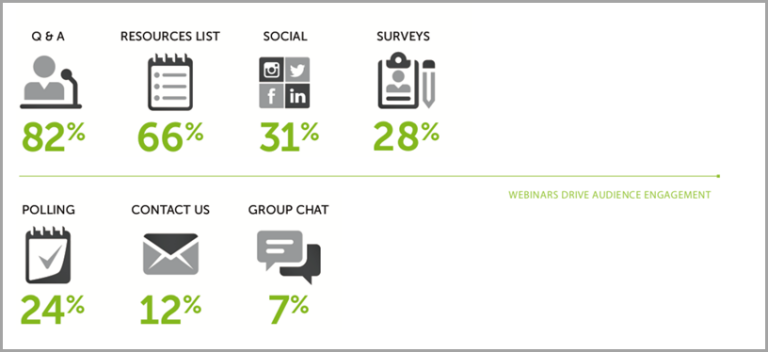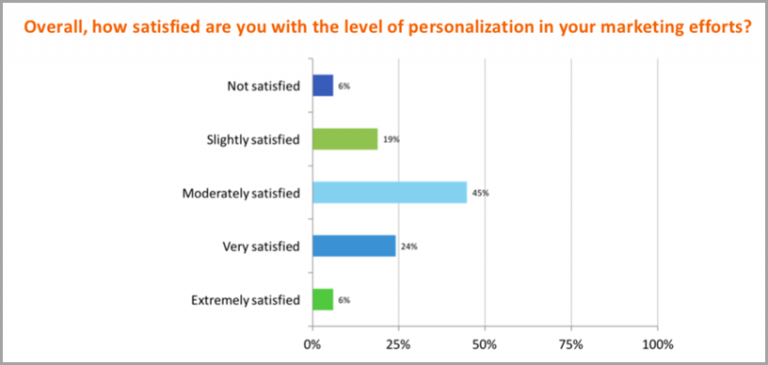
Trends in digital marketing come and go, and it’s easy to dismiss some that appear to be fleeting. However, in today’s fast-paced marketing landscape, many of these trends are simply setting the stage for the future. As technology improves and customer demand increases, it is essential that businesses do all they can to stay relevant.
Missing out on an up-and-coming trend or being late to the party, so to speak, can be detrimental to a company trying to grow. However, getting sidetracked by each new shiny tactic that comes along could result in a disorganized and ineffective strategy that goes nowhere.
Let’s discuss the latest trends in the digital marketing world and the exact reasons why marketing teams should be paying attention to them.
1. The growth of the Micro-Influencer
Judging by the numbers alone, influencer marketing is one of the most powerful tools that a brand can utilize. It is not only one of the most trusted forms of advertising, but it also generates double the engagement that typical branded content does.
Well-known influencer names these days also demand a big paycheck, but that does not necessarily guarantee high returns for you. Take weight-loss supplement Fit Tea as an example. It is featured frequently on the Kardashians’ Instagram pages. This family has famously been dubbed Instagram royalty, so promotion like this should ideally be super profitable; except for the fact that each post can cost about $500,000. In regards to Fit Tea, the product itself only has a three-star rating on Amazon due to its unsupported health claims – a rating that deters many customers. This just goes to show that while large audience exposure matters, it may not necessarily be beneficial for a brand promotion.

Micro-influencers have smaller followings (the numbers can be anywhere between 2,000 to 100,000), but their engagement numbers are typically much higher than large accounts. One study found that micro-influencers generated nearly three times the amount of engagement than accounts with 500,000+ followers.

The true benefit of the micro-influencer is their authority within a specific niche. They generally have a certain topic of expertise that their content revolves around. Their followers are highly invested in what they have to say, and 40% of social media users report that they have bought something because of an influencer’s promotion.
Brands that want to connect with these micro-influencers must have a firm grasp on their own audience base, as well as the influencer’s. Since the demographics and interests are so specific, using analytical tools is a must. Systems like Traakr and Upfluence gather loads of data from social media influencers to break down their exact audience demographics to help marketers identify the best accounts to partner with.

With the help of these tools, brands can not only determine which influencers have the strongest pull in their industry but also which ones have the greatest amount of audience overlap.
2. Live video
Live video streaming now makes up 66% of all internet usage, and that number is expected to jump to about 80% in just a few years. While many brands have hopped on the live streaming train because of its amazing results in terms of engagement, it is no longer enough to simply hold up your iPhone and share your thoughts as your audience watches on. The quality of the video and its message is the most important factor for the majority of watchers, and if the video is not up to their standards, they will likely stop watching.
Live video streaming has become more of a production these days in order to keep audiences interested. The best way to increase viewers and prolong watch times is by including opportunities for engagement and interaction. If you are a B2B company, a live video webinar is a fantastic platform to get audiences to participate with the add-on features that many hosting services provide.
According to ON24’s Webinar Benchmarks report, the tactics that drove the highest engagement rates were live Q&A sessions, offering resource lists, and including an integrated social media experience. These interactive features allow people to participate in the production by sharing their opinions, asking questions, or even voting during live polls.

Including features like these makes a live video stream far more interactive and exciting for viewers, which means better engagement rates, and ultimately, better conversions.
3. Hyper-personalized customer journeys
Personalization has become increasingly complex and customized in recent years. Nowadays, each step in the customer’s journey can be supported by precise datasets. However, while the benefits of personalization are quite clear (59% of shoppers agree that it influences their purchase decisions), it seems that many brands are simply not stepping up to the plate quite yet.
According to Evergage’s report, over half of marketers do not believe that their company is offering personalization correctly. Furthermore, only one-third are confident that they have the necessary tools to generate meaningful personalized experiences for customers, and just 30% of teams are satisfied with their current strategies.

The only way brands can provide the level of personalization that will actually make an impact on their customer’s decision to purchase is to gather the essential data points correlating to the intended action. AI, machine learning, and big data technology can support an accurate personalization strategy by virtually “learning” what customers want.
With AI technology, content can be customized for each step of the buyer’s journey, from the introduction to repeat purchases. By using big data systems, brands can identify online users who fit the criteria of a potential customer through deep analysis. From here, AI can offer personalized shopping suggestions based on preferences and historical behavior patterns. AI-powered tools like OneSpot use machine learning algorithms to gauge interaction data on your website. Then, it uses data collected from each user to automatically match content with their unique preferences.
Companies that have incorporated AI technology into their personalization strategies report that it drives 26% of their revenue and increases the number of repeat customers by 37%. By sending things like personalized links, shoppers are also far more likely to purchase an item, and their average order value can increase as well, proving that AI can finally make the dream of hyper-personalization a reality for brands.

4. The importance of instant conversations
The demand for instant customer support has grown exponentially over the past few years, and in today’s market, failure to provide this service could result in lost sales. A shocking 77% of customers will not buy something online if the website does not offer live chat service.
When customers engage with a business through live chat, they are 4.5 times more likely to make a purchase and far more likely to become a loyal customer. However, even with statistics like these, less than 10% of websites offer this function. These companies also seem to struggle with the quality of service that is expected through live interactions, as sadly 21% of customer inquiries are ignored completely.
Simply offering live chat assistance is clearly not enough, as companies must be able to handle all kinds of queries and tasks that stretch beyond customer service. Chatbots and Facebook Messenger bots have become an integral part of today’s sales process, so brands must find ways to improve these systems and how they are programmed. Once again, AI technology is helping to create instant engagement with customers through conversations and support options, which can greatly improve the customer experience.
Not only can AI chatbots be programmed to answer FAQ’s, they can also be a helpful sales tool. For example, Kia introduced a Facebook Messenger chatbot that could answer car buyers’ questions and help guide them to the vehicle that fits their exact needs. This resulted in 3 times higher online conversion rates.

The demand for instant assistance is at an all-time high these days, and companies must focus on creating more options for customers to engage with their brand for better conversations and higher satisfaction. By using AI-powered chatbots, businesses can guarantee that every customer inquiry is addressed to improve the overall experience.
5. Connecting IRL (in real life)
Taking online companies offline has been a major trend in the past few years, and for good reason. It gets a lot of hype going and can draw huge crowds of fans-turned-customers to get a real hands-on experience with products. For example, Kylie Jenner’s cosmetic line was founded online, but exploded in popularity thanks in part to social media. When she announced a one-time pop-up store, fans were ecstatic. This finally gave them the chance to handle the product in-person, try out the colors, and even meet the teen-mogul herself.
This popup shop shows the power of offline experiences for online businesses to show off their products. However, this kind of experience is not limited to retail-type companies; B2B, SaaS, networking programs, and other companies that offer services, rather than a physical product, can get in on this, too.
The online dating and networking app Bumble has always focused on taking online relationships into the real world. But lately, this brand has been doing an excellent job at engaging with users through experiential marketing events that prove that Bumble is more than just swiping left or right. To promote their latest Bumble BFF and Bumble Biz features, which allow people to meet up to form friendships and business relationships, they’ve held brunches, networking events, and even a winter wonderland at Coachella to build more personal connections with their user base.

A brand is so much more than just a logo and a product. With tools like social media and the popularity of real brand experiences, customers are able to connect with businesses and other like-minded people in ways that were never before possible. Building these relationships with consumers is essential for establishing brand recognition, and ultimately, customer loyalty.
Conclusion
Not every new idea or tactic is a fit for every business; however, there is something that companies can take away from each trend to improve their results. The key is to stay aware of what’s new and be able to tell the difference between what is “hot” and what is actually effective.
Guest author: Manish Dudharejia is the President and Co-Founder of E2M Solutions Inc, a San Diego Based Digital Agency that specializes in Website Design & Development and eCommerce SEO. With over 10 years of experience in the Technology and Digital Marketing industry, Manish is passionate about helping online businesses to take their branding to the next level.